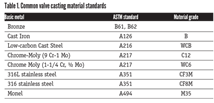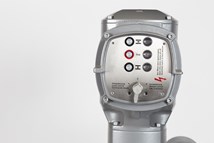Use social media to attract young manufacturing talent
Nicole Wolter, president of HM Manufacturing and a millennial, suggests tips for creating a social media feed that attracts young people to manufacturing.
Edited by Lori Beckman

As manufacturing still struggles to fill vacant jobs across the globe, machine shops need to use every tool in (or outside) the box to showcase the benefits of a career in this industry. Nicole Wolter, president and CEO of HM Manufacturing in Wauconda, Illinois, believes a solid social media strategy is the best tool to reach high school and college students — the future of our workforce — who we must educate about this fruitful and rewarding career path. Production Machining asked Wolter, who finds much of her young workforce by offering internships to local high school students, about how her company uses social media and her advice when it comes to having an online presence.
PM: Why is it important for your company to have active social media accounts?
Nicole Wolter: I feel like manufacturing gets a bad rap because we aren’t targeting young people on social media. My company isn’t on social media to get work; we do this for manufacturing exposure. I decided not to pitch, not to say, “here’s what we can do,” but instead make manufacturing more inviting to more people. So, I showcase my employees and our diversity and the team aspect of my company. I do throw in product spotlights of something cool we are making, but it is always focused on what we’re doing, using the latest technologies and talking about the “how-to” instead of the sales pitch. I’m showing the interns and the 16- and 17-year-olds learning a new skill. And it is gaining traction. We see a lot of high schoolers on Instagram liking our posts, wanting to know how to reach a manufacturer in their area. We also use video to showcase our team.
I just opened a TikTok account because that’s where high school kids are, and they are on Instagram. They aren’t on Facebook or LinkedIn. So we need to do a better job of showcasing what manufacturing is by using those platforms. Read more of the inverview here.
RELATED CONTENT
-
DBB and DIB: Which is which?
The term “double block-and-bleed (DBB)” carries a lot of misconception when it’s used to describe valve functionality.
-
Beauty or a Beast? Using NDE on Valve Components
When it comes to valves, “beauty is only skin-deep” is often a true statement. Since Superman and his X-ray eyes don’t really exist, there is no way to verify the quality of a valve or valve component just by looking at it.
-
The Final Control Element: Controlling Energy Transformation
When selecting control valves, be sure to properly evaluate the process conditions to identify potential issues and select the proper management techniques.











 Unloading large gate valve.jpg;maxWidth=214)